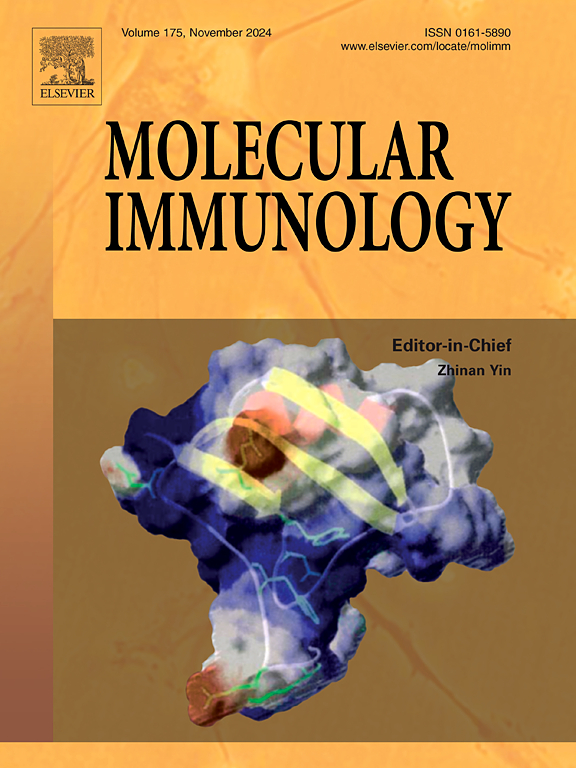Exosomal miR-214–3p reprograms BMSC fate: A novel intercellular mechanism linking vascular insufficiency to impaired bone regeneration in nontraumatic ONFH
IF 3
3区 医学
Q2 BIOCHEMISTRY & MOLECULAR BIOLOGY
引用次数: 0
Abstract
Background
Nontraumatic osteonecrosis of the femoral head (NONFH) is a debilitating bone disorder of unclear etiology, characterized by impaired bone regeneration and reduced vascularization. However, the influence of NONFH-derived exosomes on bone marrow stromal cell (BMSC) differentiation and angiogenesis remains poorly understood.
Methods
Exosomes were isolated from femoral head tissues of NONFH patients and fracture controls (femoral neck fractures). Their characteristics were confirmed by transmission electron microscopy (TEM), nanoparticle tracking analysis (NTA), and Western blot. BMSCs were treated with different exosomes (control exosomes, NONFH exosomes, or NONFH exosomes + miR-214–3p inhibitor), and osteogenic/adipogenic differentiation was assessed by alkaline phosphatase activity, calcium deposition, osteogenic/adipogenic marker expression, and Oil Red O staining. Human umbilical vein endothelial cells (HUVECs) were similarly treated, and angiogenesis was evaluated via tube formation assays. In vivo, exosomes were injected into rats, and femoral changes were analyzed by Western blot, hematoxylin-eosin (HE) staining, and immunohistochemistry.
Results
Exosomes from both groups exhibited typical morphology, size, and marker expression. NONFH exosomes suppressed BMSC osteogenesis, enhanced adipogenesis, and impaired HUVEC angiogenesis, with miR-214–3p as a critical mediator. Inhibiting miR-214–3p partially restored osteogenic and angiogenic capacities. In rats, NONFH exosomes reduced osteogenic protein expression, expanded marrow cavities, and disrupted trabecular bone structure, while miR-214–3p inhibition ameliorated these effects.
Conclusion
NONFH-derived exosomes contribute to disease progression by delivering miR-214–3p, which inhibits BMSC osteogenesis and HUVEC angiogenesis. Targeting this pathway may offer novel therapeutic strategies for NONFH.
外泌体miR-214-3p重编程BMSC命运:一种新的细胞间机制,将血管功能不全与非创伤性ONFH的骨再生受损联系起来
背景:非外伤性股骨头坏死(NONFH)是一种病因不明的骨骼衰弱性疾病,其特征是骨再生受损和血管化减少。然而,nonfh来源的外泌体对骨髓基质细胞(BMSC)分化和血管生成的影响仍然知之甚少。方法从非fh患者和骨折对照组(股骨颈骨折)的股骨头组织中分离性体。通过透射电镜(TEM)、纳米颗粒跟踪分析(NTA)和免疫印迹(Western blot)证实了它们的特征。用不同的外泌体(对照外泌体、NONFH外泌体或NONFH外泌体+ miR-214-3p抑制剂)处理骨髓间充质干细胞,通过碱性磷酸酶活性、钙沉积、成骨/脂肪标志物表达和油红O染色来评估成骨/脂肪分化。人脐静脉内皮细胞(HUVECs)也进行了类似的处理,并通过管形成试验评估血管生成。在体内,将外泌体注射到大鼠体内,通过Western blot、苏木精-伊红(HE)染色和免疫组织化学分析股骨变化。结果两组的染色体形态、大小和标记表达均具有典型特征。NONFH外泌体抑制BMSC成骨,增强脂肪生成,并损伤HUVEC血管生成,miR-214-3p是一个关键的介质。抑制miR-214-3p部分恢复成骨和血管生成能力。在大鼠中,NONFH外泌体降低了成骨蛋白的表达,扩大了骨髓腔,破坏了骨小梁结构,而miR-214-3p抑制改善了这些作用。结论nonfh来源的外泌体通过传递miR-214-3p促进疾病进展,miR-214-3p抑制BMSC成骨和HUVEC血管生成。靶向这一途径可能为NONFH提供新的治疗策略。
本文章由计算机程序翻译,如有差异,请以英文原文为准。
求助全文
约1分钟内获得全文
求助全文
来源期刊

Molecular immunology
医学-免疫学
CiteScore
6.90
自引率
2.80%
发文量
324
审稿时长
50 days
期刊介绍:
Molecular Immunology publishes original articles, reviews and commentaries on all areas of immunology, with a particular focus on description of cellular, biochemical or genetic mechanisms underlying immunological phenomena. Studies on all model organisms, from invertebrates to humans, are suitable. Examples include, but are not restricted to:
Infection, autoimmunity, transplantation, immunodeficiencies, inflammation and tumor immunology
Mechanisms of induction, regulation and termination of innate and adaptive immunity
Intercellular communication, cooperation and regulation
Intracellular mechanisms of immunity (endocytosis, protein trafficking, pathogen recognition, antigen presentation, etc)
Mechanisms of action of the cells and molecules of the immune system
Structural analysis
Development of the immune system
Comparative immunology and evolution of the immune system
"Omics" studies and bioinformatics
Vaccines, biotechnology and therapeutic manipulation of the immune system (therapeutic antibodies, cytokines, cellular therapies, etc)
Technical developments.
 求助内容:
求助内容: 应助结果提醒方式:
应助结果提醒方式:


